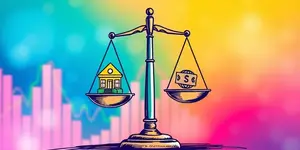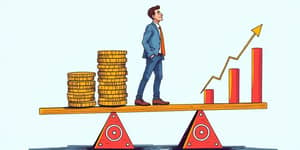
Markets, at their core, are reflections of human emotion. From frenzied buying sprees to desperate sell-offs, the psychology of investors can propel asset prices to dizzying heights and then plunge them into steep declines.
Understanding the forces that drive these swings is not just an academic exercise—it can be a powerful tool for preserving wealth and making informed decisions.
In this article, we will delve deep into the anatomy of market bubbles, explore the emotional roller coaster that investors ride, and offer actionable strategies for lasting resilience in the face of potential crashes.
An economic bubble occurs when asset prices become significantly inflated beyond their fundamental value. Driven by speculative fervor and collective optimism, bubbles inevitably end in dramatic corrections.
Recognizing the earliest stirrings of a bubble often involves spotting subtle shifts in sentiment and valuation metrics—before the frenzy takes hold.
Hyman P. Minsky’s model, widely endorsed by economists and historians, breaks a bubble into five distinct stages. Each phase is driven by unique emotional currents that push prices higher or trigger the eventual collapse.
After the crash, many experience depression and gradual recovery of hope before optimism returns and a new cycle begins.
History offers vivid examples of bubbles and their aftermath. The Dutch Tulip Mania of the 1630s saw prices soar over twenty-fold before collapsing to near zero. In the late 1990s, the Nasdaq index climbed 400% only to lose 80% of its value by 2002.
The 2007–2008 housing bubble was fueled by subprime lending, with home prices far outstripping income growth. More recently, Bitcoin’s rally from $1,000 to $20,000 in 2017 ended with an 85% drawdown by 2018.
Each episode underscores how mass psychology trumps fundamentals once euphoria grips investors.
Identifying bubbles while they inflate remains challenging because euphoric narratives often feel compelling and “new paradigms” justify elevated prices.
However, certain quantitative and qualitative signals have reliably preceded major corrections:
Awareness of these indicators can act as an early warning system for prudent investors.
Emotions often drive the worst market errors—buying at peaks and selling at troughs. The following tactics can help counteract cognitive biases and protect capital.
By combining disciplined processes with a clear understanding of emotional cycles, investors can navigate market turbulence more confidently.
Market bubbles are as old as finance itself, driven by fundamental human impulses: hope, fear, and the desire for quick gains. Recognizing these impulses and implementing defensive behavioral tactics can mean the difference between enduring a crash and suffering severe losses.
Ultimately, the most successful investors balance ambition with discipline, pairing strategic analysis with emotional resilience. By staying vigilant, focusing on fundamentals, and preparing for both the highs and lows, one can turn market euphoria into an opportunity rather than a perilous trap.
References













